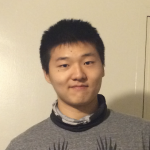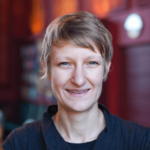
Numerical analysis of bi-level parameter training scheme in total variation image reconstruction
Researchers: Pan Liu, Carola-Bibiane Schönlieb
In this project we are aiming to provide an efficient numerical scheme which solves the minimizer of bilevel training scheme stated as follows:
$$ \hat{\alpha} = arg min (||u_\alpha-u_c||_{L^2}^2: \alpha>0) (1) $$
$$ u = arg min (||u_\alpha-u_\eta||^2_{L^2(Q)}+\alpha |u|_{TV(Q)} : u \in BV(Q) ) (2) $$
in which $u$ is a given corrupted image, $u_c$ is the corresponding clean image, and $\alpha \in$ ℝ+ is called the tuning parameter. The quality of a reconstructed image $u$, generated in (2), highly depends on the choice of $\alpha$: choosing it too large may result in losing critical fine details and too small may keep noise un-removed. Hence, the choice of the “optimal” tuning parameter $\alpha$ becomes an important task. One way to determine the optimal $\hat{\alpha}$ is by using a bilevel training optimization scheme, which can optimally adapt itself to the given “perfect data $u_c$”, stated above in (1). The existence of such $\hat{\alpha}$ of the cost map $I(\alpha):=||u_\alpha-u_c||$ has been established, but no available numerical scheme has been proposed to solve $\hat{\alpha}$. What people do in practice is to try different values of $\alpha$ from a discrete set ${0, \alpha_1, \alpha_2, …. , \alpha_n}$ and pick the one which gives the minimum value of cost map $I(\alpha)$ as an “approximated” solution of $\hat{\alpha}$. However, we do not have any estimation of the rate of convergence. In another word, we have no idea that how close we are to the actual optimal parameter $\hat{\alpha}$.
The goal of this project is two-fold. The first part is to design a numerical algorithm which solves the optimal $\hat{\alpha}$, as well as study the optimal conditions for such training scheme. We have proved that the cost map $I(\alpha)$ is not quasi-convex and hence the traditional numerical method is not applicable. To overcome this drawback, an alternative method is proposed. Roughly speaking, we will construct an approximation bi-level training problem by modifying the given $u_\eta$ in a certain sense, and show that an optimal parameter, say $\hat{\alpha}_{\eta}$, of this approximation problem can be located by our proposed numerical scheme. Then, we prove that the optimal parameter $\hat{\alpha}_{\eta}$, found in the approximation problem, converges to the actual optimal $\hat{\alpha}$, and we also give the estimation of the rate of convergence. The second part of this project is aiming to provide an acceleration scheme of the previously proposed algorithm, in which we shall use semi-group properties as well as the stochastic method proposed in reference [2].

